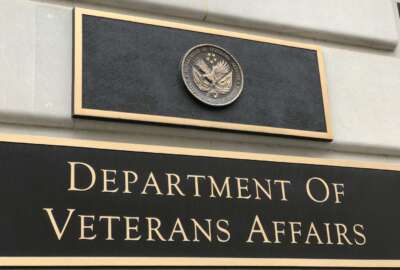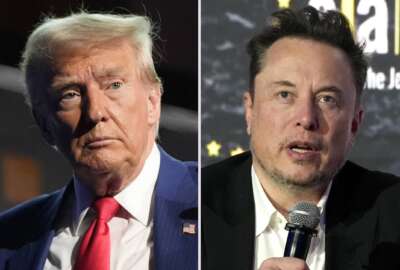Treasury, HHS, Justice find more areas to cut waste
Cutting back on excess dollar-coins, tackling Medicare prescription drug abuse and prosecuting procurement fraud are just some of the ways the White House says ...
wfedstaff | June 4, 2015 3:03 pm
Agencies updated the Vice President on their initiatives to cut waste Tuesday, reporting on everything from stopping the minting of dollar coins to adding another level of oversight to Medicare to more aggressive prosecuting of bad government contractors.
Take the Treasury Department. It is suspending production of the presidential dollar coins for circulation into the banking system for a very simple reason: there’s very little demand for them.
“Currently, about 1.4 billion surplus coins are sitting in Federal Reserve vaults. That’s enough to meet current demand for more than a decade,” said Neal Wolin, deputy secretary of the Treasury, during a conference call with reporters just after agency leaders met with Vice President Joe Biden for a progress report on the Obama administration’s campaign to cut waste.
Treasury is required under a 2005 law to issue four new presidential coins a year. So far, they’re up to President James Garfield, and they’ve minted 70 million to 80 million coins for each president. But any future dollar coins only will be produced for collectors sets, not in the quantities the U.S. Mint would produce for circulation. 
Treasury estimates the move would save around $50 million per year.
At the Department of Health and Human Services, officials say their biggest contribution to the waste-cutting effort has been in the area of abuse and fraud of prescription drugs under Medicare Part D. A new HHS crackdown will try to end payments by Part D providers to pharmacies on behalf of “doctor shopping” patients, said HHS Secretary Kathleen Sebelius.
“We have the Government Accountability Office telling us that 170,000 Medicare beneficiaries had received prescriptions from five or more doctors for frequently-abused drugs like Oxycontin and Percocet,” Sebelius said. “Not all of the cases are fraudulent, but some of them certainly are. The same GAO study found that one beneficiary received more than 3,600 pills from 58 different prescribers.” Up until now, Sebelius said, Medicare Part D insurance plans had been automatically paying those claims because the department generally requires them to pay providers quickly.
HHS is issuing new guidance telling companies how to detect Medicare fraud and to hold off on payment in situations where fraud is suspected.
And, Sebelius said, under the Affordable Care Act, HHS has some new tools to stop improper Medicare and Medicaid payments before they go out the door.
“Providers now have to go through tougher screening procedures before they can start billing Medicare, and we’re giving investigators new tools to start identifying suspicious claims,” she said. “We’ve also released new rules that give states the capability to recover improper Medicaid payments. We project that’s going to save $2 billion over the next five years, with nearly a $1 billion going back to the states.” 
For example, the procurement fraud case against Samir Itani and his company, American Grocers.
“Itani and his company bought soon-to-be-expired food at deep discounts,” said Deputy Attorney General James Cole. “After the food was sent to his warehouse, he changed the dates on the labels to have the food appear to be fresh. He then sold the food at a hefty markup to the military to supply troops in Iraq and elsewhere.”
Itani was fined in a civil case for $15 million; a separate criminal conviction sent him to prison for two years.
All three agencies said they’re taking many other steps to cut waste, as they were instructed to do back in June, when the President signed the executive order that launched the campaign to cut waste.
One of the categories targeted for spending reductions was agency promotional products. HHS plans to send the Office of Management and Budget a plan to reduce “swag” by the end of the year. DOJ and Treasury say they’ve already done away with it.
RELATED STORIES:
White House announces plan to cut government waste
New executive order squeezes more savings from federal agencies
Copyright © 2024 Federal News Network. All rights reserved. This website is not intended for users located within the European Economic Area.
Jared Serbu is deputy editor of Federal News Network and reports on the Defense Department’s contracting, legislative, workforce and IT issues.
Follow @jserbuWFED






